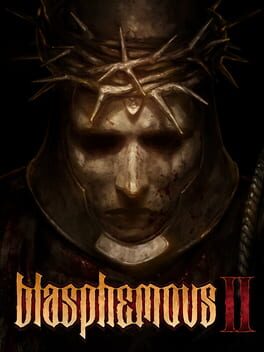An improvement in every area that the first game was weak in with only a few setbacks concerning the first game's strengths. Traversal has been expanded upon as well as ironed out, broadening the possible range of the platforming challenges that provide a quick and diverting compliment to the moderately sped up combat. Whereas in Blasphemous 1, platforming segments were not just monotonous and tedious to get through on a mechanical level, but they didn't toe the absolutely necessary line of 2D level design abstraction with worldly richness and sense of place. Most areas were navigable in a similar way, and that way was nearly always slightly aggravating and boring. In the sequel, areas have a more noticeable differentiation in architecture and transgressions of ingress, making for a varied and localisable pronouncement of site. With this, the finely tuned motorics of The Penitent One is complimented by a better expanded metroidvania toolset, creating more axes of incursion between the available elements of play; whereas in the first game, fight and flight were pretty grossly bisected, Blasphemous 2 anchors its platforming challenges in the tools honed with combat. While double jump, dash, and "grapple" (Metroid grapple i.e. only at specific point, but here with rings to grab onto) are all present, the major tools for both major gameplay modes, platforming and combat, are set within the weapons. With each of the 3 melee weapons, the player is given a new tool to experiment on many of the points of interaction within Blasphemous II's many varied systems: the rpg-lite progression paths born from each weapon elicits many interesting variations of play possibility, the traversal is more obviously built with the frictionless joy of metroidvania shuttle-running, and the combat sings with ebbs and flows that were not possible in the much simpler system of the first game.
Some minor regressions in terms of enemy design, many of which are carried over from the first game, and quest design, which, while archaic and obtuse in the first game, is dumbed down for a more simplistic collect-a-thon type of mode. The enemy that are carried over from the first game maintain the care of animation and attack variety, whereas the new enemies, while still deployed in interesting combat encounters throughout the entire experience, are less interesting to fight and to watch die (the first game got by with an incredible charm of gore: each enemy exploding in an ironic display of highly unique hubris when reposted). The dreamy and uncanny unknowability of ancient religion is also lost in the streamlined and gameified approach: I felt more at home in Blasphemous II, which kind of took away from the sublime terror and discomfort of the first game's religious theme. Religion in Blasphemous II is part of interesting world building, but it has less to be said about it when the second go around has finished - I feel about this messiah about as much as I do when thinking of Pantagruel: a far cry from the discomfort at sitting on Golgotha with Blasphemous I.
Overall, Blasphemous II improves over the first game, and is a better entry point for the games if you missed the first one in 2019. Going back to 1 from 2 would be difficult after the mechanical improvements, but so is reading Deuteronomy after the Gospels. There is a reason that the NLT is more popular than the KJV now.
Some minor regressions in terms of enemy design, many of which are carried over from the first game, and quest design, which, while archaic and obtuse in the first game, is dumbed down for a more simplistic collect-a-thon type of mode. The enemy that are carried over from the first game maintain the care of animation and attack variety, whereas the new enemies, while still deployed in interesting combat encounters throughout the entire experience, are less interesting to fight and to watch die (the first game got by with an incredible charm of gore: each enemy exploding in an ironic display of highly unique hubris when reposted). The dreamy and uncanny unknowability of ancient religion is also lost in the streamlined and gameified approach: I felt more at home in Blasphemous II, which kind of took away from the sublime terror and discomfort of the first game's religious theme. Religion in Blasphemous II is part of interesting world building, but it has less to be said about it when the second go around has finished - I feel about this messiah about as much as I do when thinking of Pantagruel: a far cry from the discomfort at sitting on Golgotha with Blasphemous I.
Overall, Blasphemous II improves over the first game, and is a better entry point for the games if you missed the first one in 2019. Going back to 1 from 2 would be difficult after the mechanical improvements, but so is reading Deuteronomy after the Gospels. There is a reason that the NLT is more popular than the KJV now.
